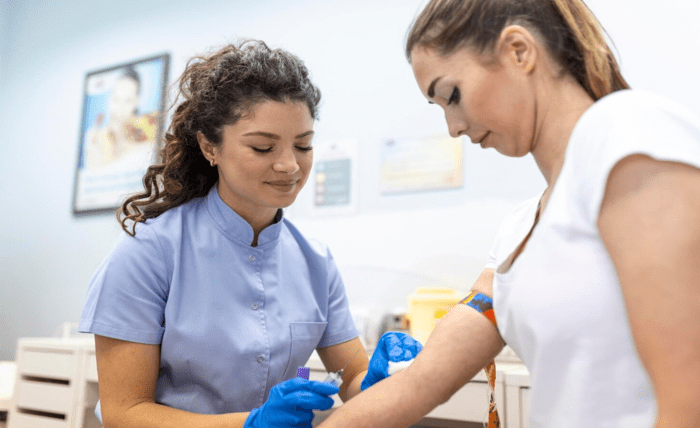
Unveiling the Plasma Donation Process: What to Expect
The Science Behind Plasma: Why It Matters
Plasma is a vital component of human blood, constituting about 55% of its overall volume. It’s a pale yellow liquid that serves as a transport medium for blood cells, nutrients, hormones, and waste products. The significance of plasma extends far beyond its basic functions; it is crucial for the production of therapies that treat various medical conditions, including those affecting the immune system, clotting disorders, and burn injuries. Each year, millions of patients rely on plasma-derived products, and the demand for plasma continues to rise as advancements in medicine evolve. Understanding the journey of plasma from donor to patient can illuminate the importance of your contribution in this life-saving process.
Your First Donation: A Step-by-Step Journey
Your first plasma donation can be an empowering experience. When you arrive at a plasma donation center, you’ll begin with a thorough screening process. This includes a health questionnaire that assesses your medical history, travel history, and current health status, ensuring that you are a safe candidate for donation. After passing the preliminary checks, you’ll undergo a physical examination, which typically involves checking your blood pressure, pulse, temperature, and hemoglobin levels. This comprehensive approach not only protects the recipients of plasma but also guarantees that you are fit for the process. Once cleared, you will receive orientation regarding the donation procedure, potential side effects, and post-donation guidelines. Following this, your arm will be cleaned, and a sterile needle will be inserted to start the apheresis process, which separates plasma from your blood and returns the red blood cells and platelets back to your body. The entire procedure generally takes around 60 to 90 minutes, and you’ll be monitored throughout to ensure your well-being.
Post-Donation Care: Keep Your Body Happy
After your plasma donation, your responsibilities aren’t over. Post-donation care is critical to ensure that your body rebounds swiftly and healthily. Immediately after you finish the process, you’ll be encouraged to rest and hydrate. Plasma donation can lead to a temporary decrease in protein levels in your blood, so replenishing fluids and consuming protein-rich snacks, like cheese or yogurt, is vital. Avoid strenuous exercise for at least 24 hours following your donation, and keep an eye out for any signs of dizziness or fatigue. Listening to your body and allowing it ample time to recover will not only aid your personal health but also enhance your future donation experiences. Remember, your well-being is paramount not just for you, but also for those relying on your generosity.
Locating the Best Plasma Donation Centers: A Practical Toolkit
Online Resources: Websites and Apps to Aid Your Search
In this digital age, finding a suitable plasma donation center has been revolutionized thanks to various online resources. Websites such as the American Red Cross and the Plasma Protein Therapeutics Association (PPTA) offer directories of accredited donation centers, often searchable by zip code or city. Additionally, many plasma donation centers have developed their own apps, providing you with information on center locations, operational hours, and even appointment scheduling directly from your mobile device. These digital tools not only streamline the search process but also enable you to read reviews from other donors, compare different facilities, and check for compensation rates the latter which can vary greatly from one center to another. Utilizing these resources effectively can enhance your donation experience and ensure you choose a center that aligns with your expectations.
In-Person Exploration: How to Visit and Evaluate Centers
While online resources are invaluable, visiting a plasma donation center in person can offer insights that digital platforms cannot convey. Taking the time to explore potential centers allows you to evaluate the ambiance, cleanliness, and professionalism of the staff firsthand. During your visit, pay attention to how the facility is maintained, the attitudes of the staff towards existing donors, and the general flow of the donation process. A welcoming and professional environment can significantly impact your experience. Engage with current donors do they return frequently? What are their sentiments about the center? Additionally, inquire about specific protocols they follow in terms of donor safety and data protection, as these factors are incredibly important in this sensitive healthcare setting. By gathering first-hand information, you can make a more informed decision, ensuring a positive donation journey for yourself and others.
Word of Mouth: Leveraging Community Insights for Optimal Choices
Don’t underestimate the power of community insights when choosing a plasma donation center. Engaging your social circle, including friends, family, and coworkers, can provide you with anecdotal experiences that reveal the nuances of local facilities. Online community forums and social media platforms can serve as valuable resources where donors share their personal stories, as well as their recommendations or warnings about certain centers. Look for specific feedback regarding the staff’s professionalism, the cleanliness of facilities, wait times, and overall donor satisfaction. Many individuals are open to discussing their donation experiences and can provide you with tips or insights that could enhance your chances of having a seamless donation day. Furthermore, local support groups may organize donation drives, offering you additional opportunities to contribute while connecting with like-minded individuals in your community.
Understanding Eligibility & Health Guidelines for Plasma Donation
Who Can Donate: A Comprehensive Breakdown of Requirements
Eligibility to donate plasma varies based on several key criteria established by organizations such as the FDA and local plasma donation centers. Generally, donors must be at least 18 years old and weigh a minimum of 110 pounds. This ensures that individuals have sufficient body mass to safely undergo the donation process without adverse effects. Potential donors must also pass a medical screening, which verifies their overall health status and ability to donate safely. Certain medical conditions, such as HIV/AIDS, hepatitis, or any other severe infectious diseases, disqualify individuals from donating plasma, as do engaging in high-risk behaviors such as intravenous drug use or unprotected sex with multiple partners. Understanding these stipulations is crucial for potential donors to determine their eligibility while also respecting the safety of recipients. Organizations work diligently to maintain stringent health guidelines to protect individuals who will receive the plasma products.
Health Considerations: Approaching Donation with Wellness in Mind
Prior to donating plasma, taking stock of your health is essential. You should approach the donation process with a clear understanding of how it impacts your body. If you’re feeling unwell, experiencing fatigue, or suffering from illness, it is advisable to postpone your donation. Maintaining overall health through balanced nutrition, hydration, and regular exercise can not only optimize your donation experience but also ensure your body effectively replenishes plasma levels post-donation. Drinking ample fluids in the days leading up to your donation day can help your veins be more visible and easier to access. Additionally, a diet rich in iron and protein benefits blood and plasma health, preparing your body for the donation process. Being transparent about any health issues during your medical screening is crucial for your safety and that of the plasma recipients; honesty and openness promote an ethical and secure donation process.
Age, Weight, and More: Decoding the Eligibility Criteria
Age and weight stand as fundamental metrics in the eligibility assessment for plasma donors, but several other factors also play a role. For instance, some centers may have additional requirements regarding the donor’s health history, including any chronic illnesses or recently administered vaccinations. Donors should also consider recent travel history; certain regions may require a deferral period following visits due to risks associated with diseases such as Zika or malaria. Additionally, factors such as medication use can affect your eligibility, as some prescribed drugs can alter blood components. Understanding these criteria not only streamlines the donation process but also prepares potential donors for what to expect and the necessary documentation they might need to present on donation day. By being informed, you can save time and enhance your overall donation experience.
The Impact of Plasma Donation: Stories and Statistics That Inspire
Real-Life Testimonials: How Plasma Donations Save Lives
One of the most powerful aspects of plasma donation lies in its capacity to transform lives. Real-life testimonials from individuals who have benefitted from donated plasma serve as poignant reminders of the profound impact each donor makes. Consider the story of Maria, a young mother diagnosed with a rare blood clotting disorder. After several weeks in intensive care, Maria’s survival hinged on receiving several units of plasma-derived treatments, allowing her to regain her health and return to her family. Her story exemplifies how a simple act of kindness can create a ripple effect, altering trajectories for individuals facing life-threatening health challenges. Many recipients often feel compelled to share their stories publicly, bring awareness to the importance of plasma donation, and inspire others to take action. These narratives not only illustrate the tangible benefits of plasma but also foster a sense of community and solidarity among donors and recipients alike, encouraging more individuals to step forward and contribute.
The Ripple Effect: Community Benefits of Donating Plasma
The effects of plasma donation extend far beyond the individual recipient; they resonate throughout communities, enhancing public health and welfare. Plasma donations, particularly from accessible plasma donations locations, help ensure that local hospitals and clinics have a steady supply of life-saving therapies to combat various medical conditions. Communities with active plasma donations locations often see an increase in health awareness as these centers frequently engage in educational outreach programs. By fostering an understanding of the donation process and its importance, these centers empower local residents to become informed advocates for health and wellness. Additionally, plasma donations can bolster local economies by providing job opportunities within donation centers and healthcare facilities. The establishment of ongoing donation drives can also unite communities in collective efforts to support their neighbors, creating bonds of trust and care while underscoring the community’s shared responsibility to give back.
Myths vs. Facts: Clearing Up Common Misconceptions
Despite the critical need for plasma donations, several myths persist that can deter potential donors from stepping forward. One common misconception is that donating plasma is painful or harmful, when in fact, the process is generally safe and well-tolerated, with extremely minimal discomfort. Another pervasive myth concerns the frequency with which individuals can donate; many potential donors are unaware that donating plasma can occur as often as every 28 days, a necessity considering the high demand for plasma products. There are also misunderstandings about the impact of compensation for donors though many centers offer financial incentives, this should not diminish the altruistic motivation behind the act. By addressing these misconceptions, we can create greater awareness about the realities of plasma donation, encouraging more individuals to participate in this life-affirming process. Understanding the facts about donation safety, benefits, and frequency can significantly alleviate apprehension and promote a healthier, more active donor populace.



